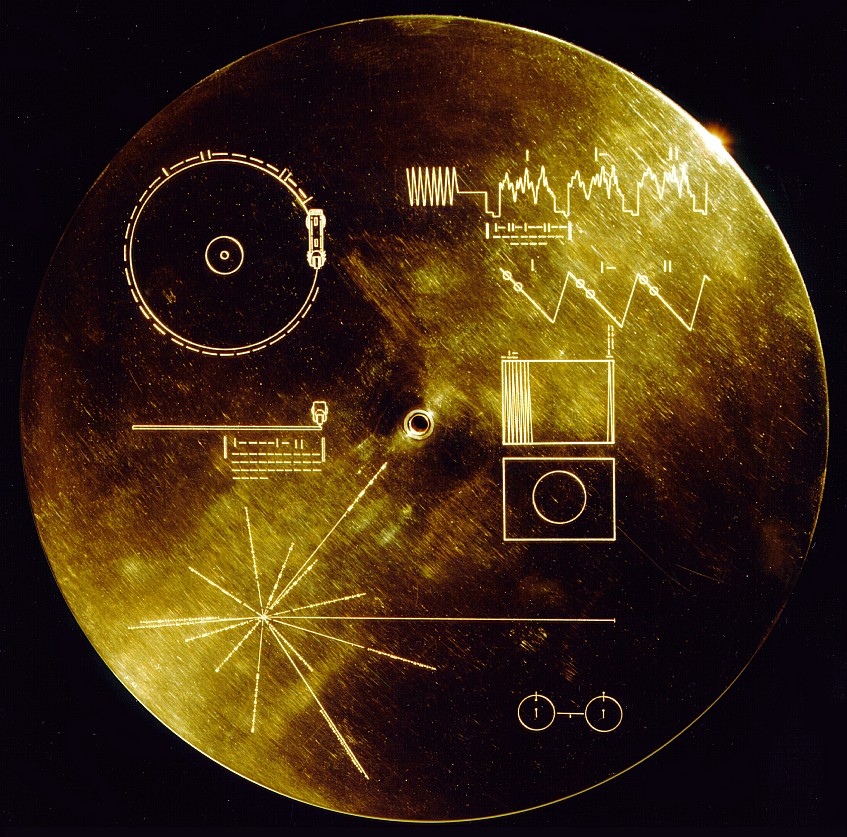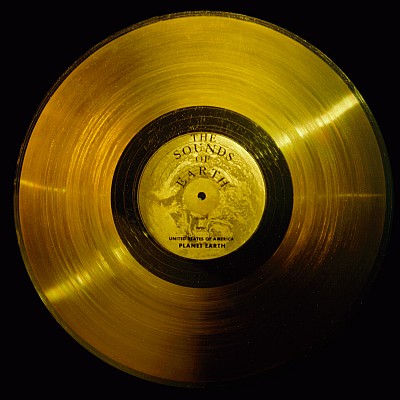 | |
|  |
|
|
| |
| Of pulsar maps, golden records, and apple pie | Sep 15, 2011 1:26 AM PDT | url |
| | |
Added 1 new A* page:I was talking about pulsars yesterday, and one thing I mentioned was that they lose their rotational energy and magnetically powered jets after "just" 10 to 100 million years. But that relatively short life-span in astronomical terms didn't deter NASA from using pulsars to illustrate Earth's position on plaques and records that went out on the Pioneer and Voyager probes in the 70's, respectively. Designed by Carl Sagan and Frank Drake, the diagram of 14 pulsars around the Earth (in the lower left of the image below) could theoretically be used by someone really smart and determined to locate Earth in this part of the Galaxy:

image by NASA (source)
The dashes along the lines pointing to the pulsars is their frequency in binary code, in time units of the spin-flip transition of neutral hydrogen (the frequency at which the spin quantum mechanical property of hydrogen atoms changes, which is illustrated to the right of the pulsar map); the length of the line is their relative distance (although if they'd wanted to be really clever they'd have somehow shown that in units of spin-flip frequency length...), and "tick marks" at the end of each line are supposed to show the pulsar's Z coordinate relative to the galactic plane. Pshew! They'd have to be pretty smart aliens to figure all that out--and to line it up with whatever they could see of some of those pulsars from wherever they are--but hey, we only want the smart aliens coming here, I suppose.
That was printed on the inside and outside of the cover (since the outside might get dinged up by micrometeorites, etc) of the Golden Records included on the Voyager probes. The diagrams above the pulsar map are supposed to show a very smart person how to make a machine that would play back the data on the record, which contained "116 images and a variety of natural sounds, such as those made by surf, wind, and thunder, and animal sounds, including the songs of birds and whales" and "musical selections from different cultures and eras, spoken greetings in fifty-five languages, and printed messages from President Jimmy Carter and U.N. Secretary-General Kurt Waldheim."
The diagrams really embody both Sagan's positive belief in the existence of intelligent life in other parts of the galaxy, and his sort of constructivist approach to science, where he liked to start with basic principles and build up from there. This is best embodied, I think, in his story of how to make an apple pie, as heard in this catchy remix:
video on Youtube
Here's what the record itself looks like:

image by NASA (source)
Despite the popular name it has gained, the record was mostly non-gold: "The record is constructed of gold-plated copper. The record's cover is aluminium and electroplated upon it is an ultra-pure sample of the isotope uranium-238. Uranium-238 has a half-life of 4.51 billion years. It is possible that a civilization that encounters the record will be able to use the ratio of remaining uranium to daughter elements to determine the age of the record."
I'd say if they can figure out the pulsar bit, the uranium puzzle should be...easy as pie! =p
|
·····
|
|
|
